Tweets
This is a bummer. I’m fond of saying I’ve been a mobile app developer since 1999; the first computer program I ever published was for the TI-83, back in high school. I’m sure I still have a binder of Z80 assembly notes around somewhere. Sad to see a 20+ year era coming to an end. https://twitter.com/adafruit/status/1263580584477175809
(original)
Coming up in 15 minutes or so: Open Book demo / presentation at the #OpenPublish Fest! https://www.youtube.com/watch?v=p3TlBRAfQ4w
(original)
Programming note: tomorrow at 4PM EDT / 3PM CDT I’ll be presenting a demo of the Open Book as a part of the #OpenPublishingFest! Will talk about some of the ideas behind it and other open source hardware projects that inspired it. Link will be posted here: https://openpublishingfest.org/calendar.html#event-214
(original)
This has been a really fun project, thanks @tomfleet for the writeup! The hat ended up being just the beginning; now playing with some outdoor sensing stuff, with the same 9-pin connector. I even put the SAMD11 variant to work in the garden, logging temp and soil moisture data :) https://twitter.com/Hacksterio/status/1262422261837029382
(original)
RT @Foone: They say civilization has progressed little in 20 years but how many gay couples were running firefighter teams back in 1990? ht…
(original)
RT @tarahaelle: I’ve been telling everyone who will listen: “The next four years will not be normal. Life will be different for the next fo…
(original)
Replying to @dronecz
Rereading the notes, the only thing I haven’t actually tested is that right-angle LED part; I got some right-angle WS2812’s from Aliexpress (linked) and those have worked great. I believe the Digikey part is compatible, but haven’t had a chance to try it. https://www.aliexpress.com/item/32841790913.html?spm=a2g0s.9042311.0.0.574a4c4dQK9B04
(original)
Replying to @dronecz
That’s the one! I haven’t assembled one of that revision yet, but I’ve tested the individual changes in other designs so it should work fine. The big thing is that the buttons will fit way better. There are some notes about it at the bottom of the README: https://github.com/joeycastillo/The-Open-Book#next-steps
(original)
Replying to @scynthero
Sorry about that! I’ve added some more countries, including Poland; had to get some guidance from a colleague on international shipping before I went ahead.
(original)
Replying to @anne_engineer and @hackaday
I haven’t yet! Have one here but alas, I gave it the wrong kind of headers. I’m also stoked to try to get it working with the Giant Board, but haven’t had time to dive in.
(original)
Replying to @patrickweave_r
Reminds me of that old Wired feature where people would put stamps on unconventional objects and send them to the magazine’s offices. I bet a PCB would get there!
(original)
At last! Just sent the first six e-book featherwing boards into the world. It’s been probably a year or more that I’ve been playing with this concept, and it feels good to finally be getting it into people’s hands. Pick yours up here: https://www.tindie.com/products/joeycastillo/the-e-book-wing-pcb-bare-pcb/ https://twitter.com/MicrochipMakes/status/1258767270370836488
(original)
The worst thing about this quarantine is that if I do it right, it’s fine; family time, yard work, grilling. But if I do it wrong? Touch the wrong item on a grocery run or let a maskless person get too near? I die horribly, or infect someone I love. Tranquility and fear. All day.
(original)
Replying to @tekdemo and @EnJens
Thanks, this has been instructive! I’ll splurge for the bubble mailers and figure out the pricing, seems like the safest bet :)
(original)
Replying to @EnJens and @oshpark
I think rates are maybe different for folks operating at that kind of volume, when you’re printing postage on custom purple mailers, instead of buying stuff at the local post office. Or the free shipping is worked into the overall cost of the order. It is pretty rad though :)
(original)
Replying to @arturo182
Wow that sounds very not good! Hmm. My plan had been to suspend it in a piece of card stock (with some more card stock on either side for rigidity), and it felt pretty solid, but if that’s the risk then maybe I need to think again. Thanks for the advice!
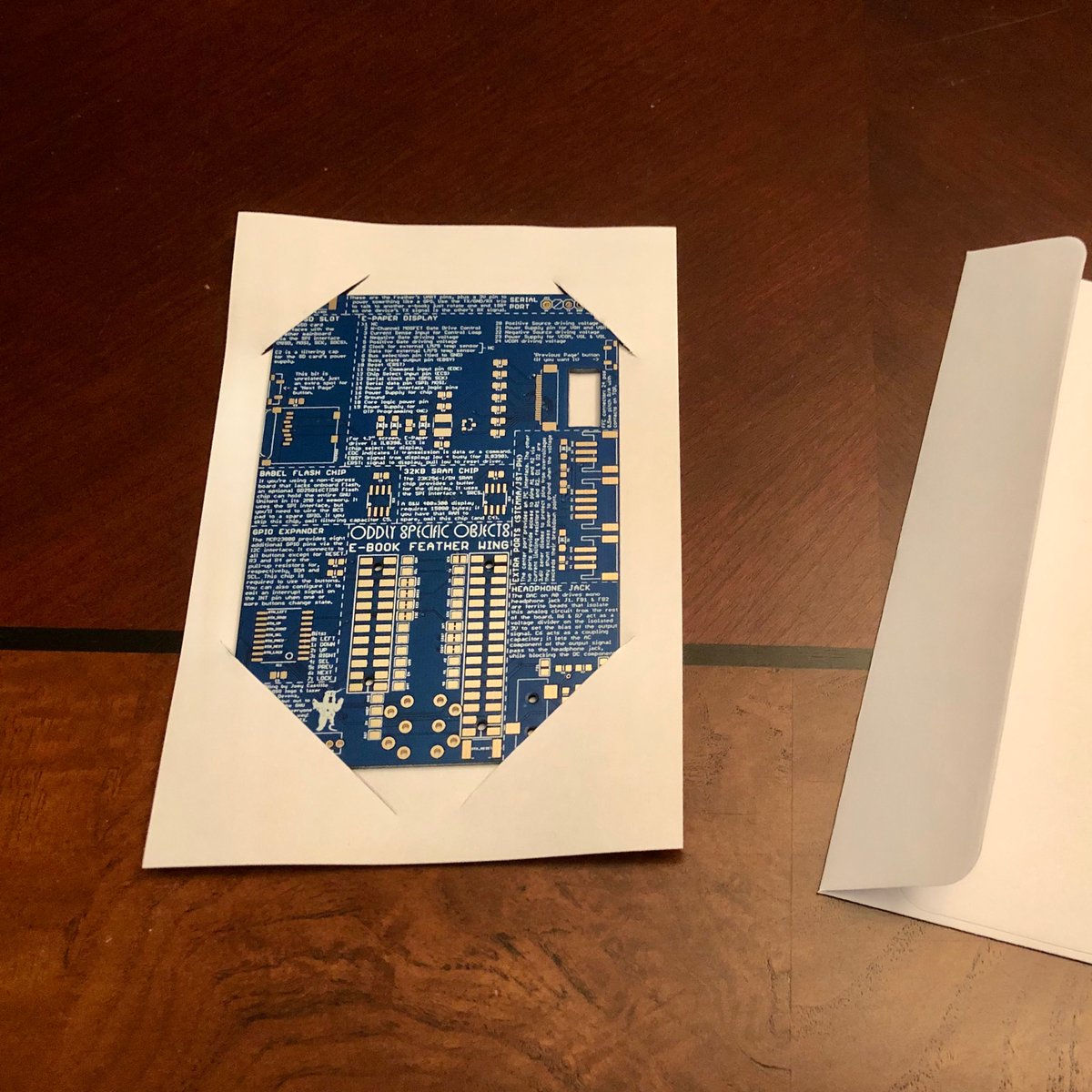
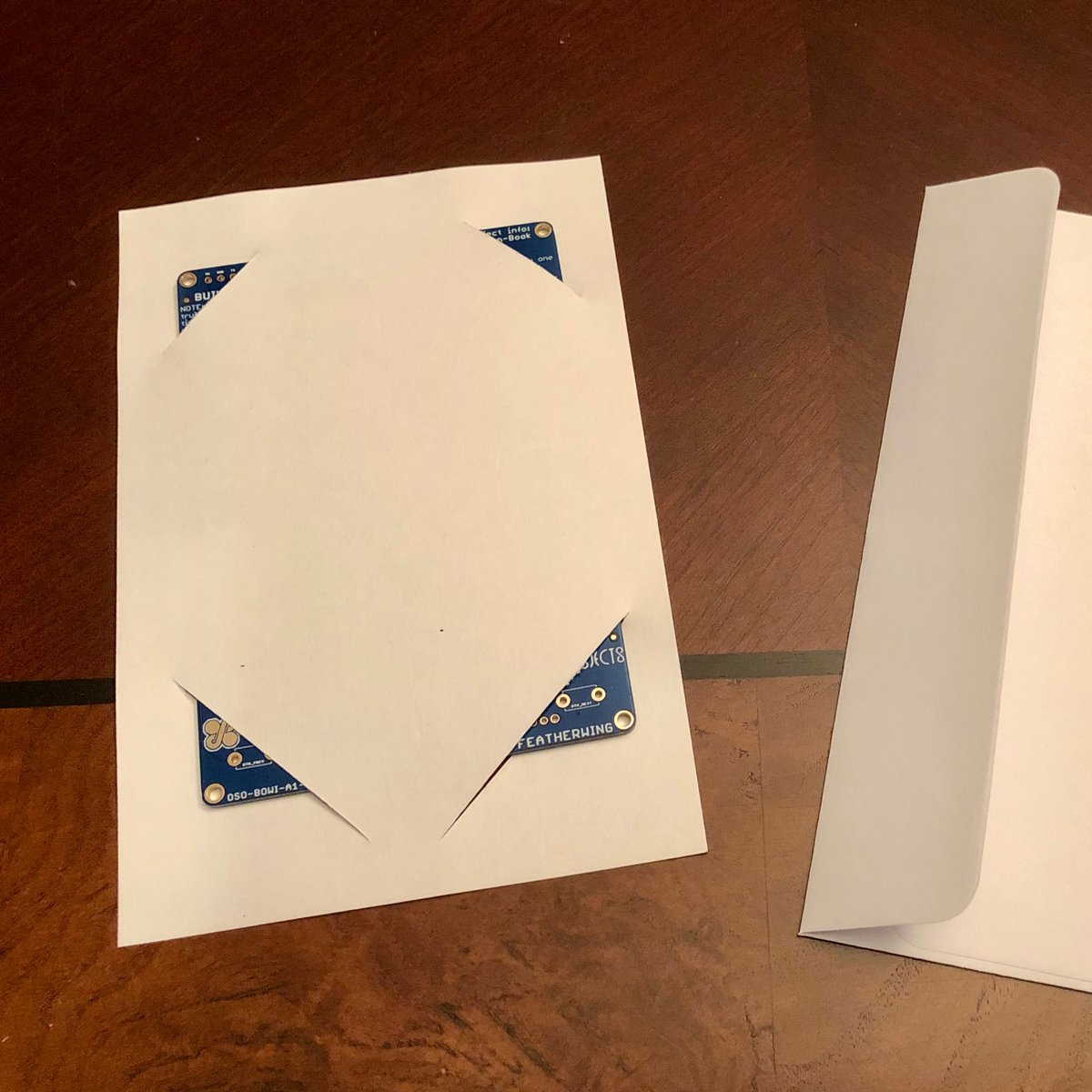
(original)
Replying to @EnJens
The bubble mailer would be sweet, but I worry it would cost more since it ships like a parcel instead of a letter? Or maybe I just need to bite the bullet and pay more for shipping. Just trying to keep costs down to make it as accessible as possible, esp if customs are a thing.
(original)
Oddly specific question: if I’m trying to send a bare PCB internationally, what’s the best method? Can I just stick it in a letter-sized envelope with stamps? Is there a customs thing? Do I pay or does it get paid on the other side? (Want to get e-book wing boards into the world)
(original)
every day i learn how much more i have to learn.
(original)
Replying to @zacwight
…very true. Mostly I’m looking for an excuse to run ML on it for the “thinking cap” pun :)
(original)
I’m not an ML person, but I’m having a sensor cap thought: I have a forehead and an ambient(ish) temperature input. Wondering if I could also do a bunch of contemporaneous oral temperature readings, and train a neural net to predict my core temperature based on those inputs. Hmm.
(original)
Replying to @josecastillo
Yay! Annotated data from a four-day sensor cap / thermo-hat run. Green area is when the cap was worn, red is forehead temp, blue is the onboard thermistor (which is not quite ambient, since it’s still picking up body heat and self-heating while charging overnight). Not bad!
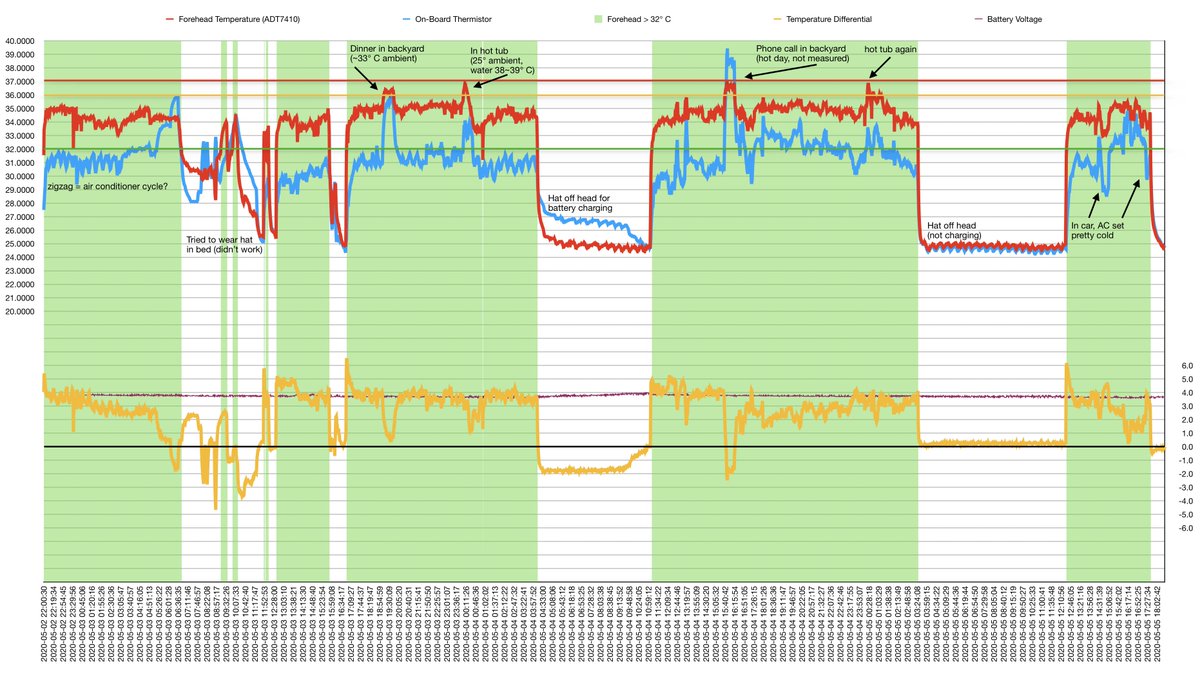
(original)
Replying to @nakanaela
Paper form or online? I sense that on the paper form people would just skip over the write-in field, but online, leaving it blank prevents you from continuing. Also, if American were an option for race, I would definitely write Texan in that box :)
(original)
Replying to @guidoism
It’s just funny because if it’s genetics, we’ve been mixed-race Texans forever, probably back to when the Rio Grande was just a river and the USA was colonies dumping tea into Boston harbor. And if it’s what I look like, I look… Hispanic. (We ended up putting “Other - Mestizo”)
(original)
Replying to @Jq78R
We talked to a family member who studies census data for a living, and he did something like that. Still it’s a bad sign that answering a question about our own family required using one of our lifelines to phone a friend.
(original)
Replying to @josecastillo
mom & sis have been debating for half an hour, I’ve been reading Census Bureau docs, and we still don’t know what race we’re meant put down except that it can’t be Hispanic because Hispanic isn’t a race. Wonder how many Hispanic families will just give up. https://www.doi.gov/sites/doi.gov/files/uploads/oia-02132020-census-webinar-race-and-ethnicity.pdf
(original)
My family is having trouble filling out the census this year. Since Hispanic isn’t a race, we’ve always been told to check off Hispanic and White. But now there’s a required write-in box under White, and now we’re confused and exasperated, and I get the sense that was the intent.

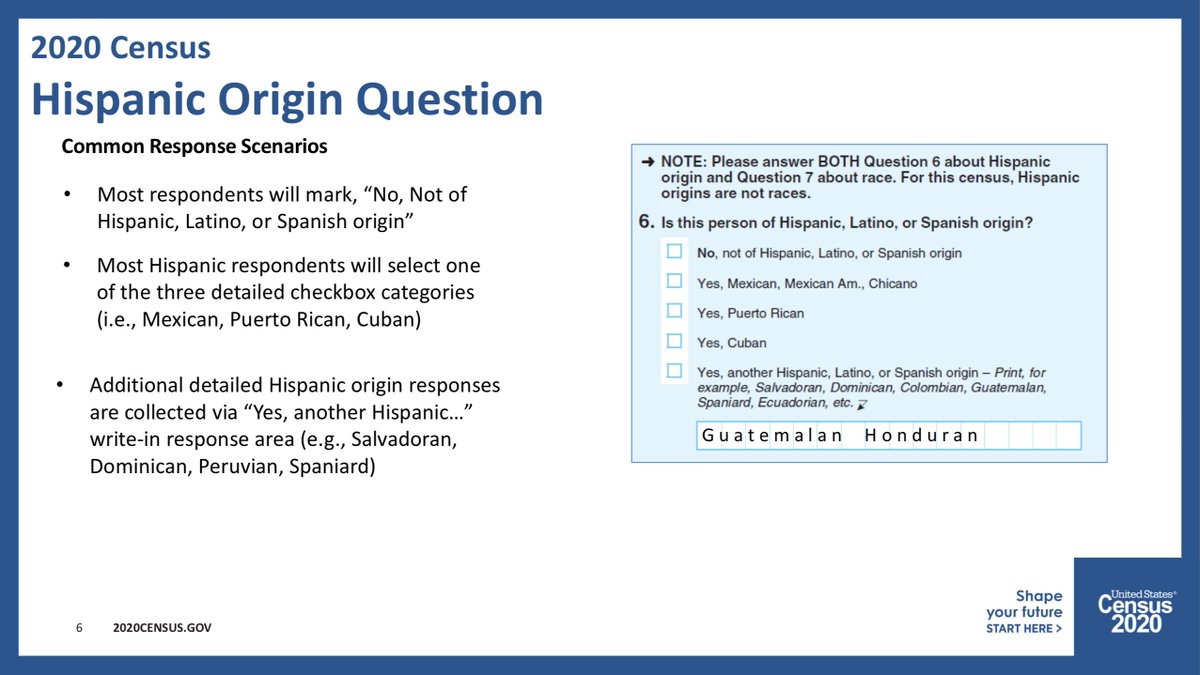
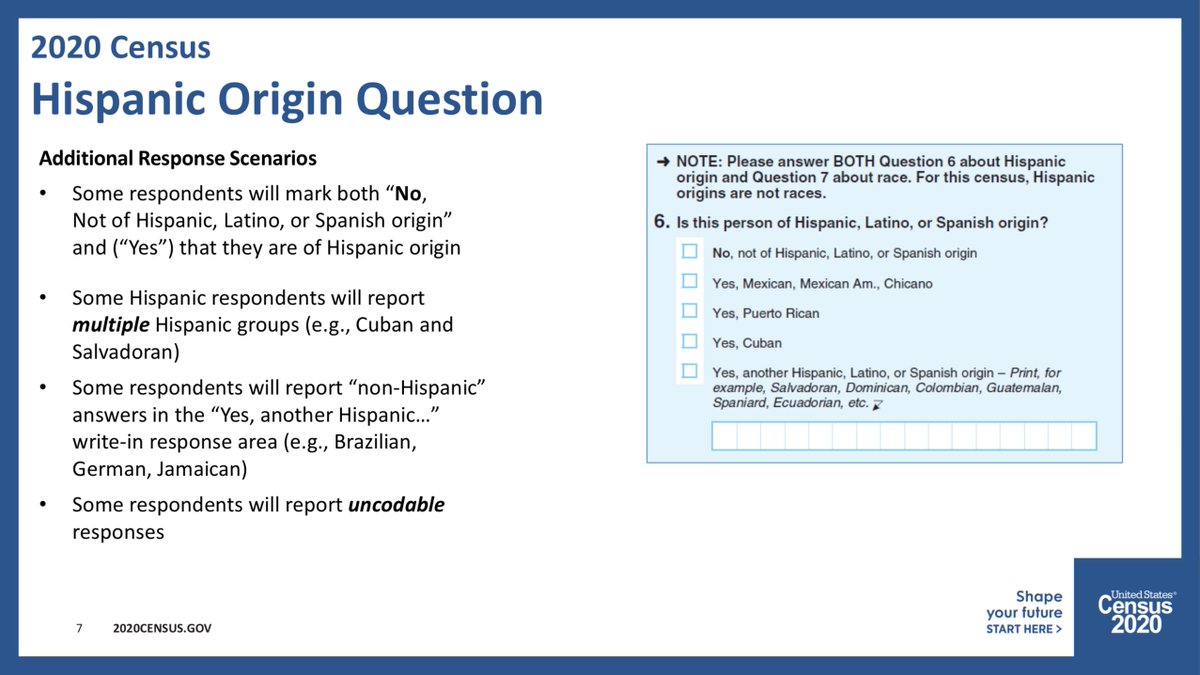

(original)
Replying to @MediaTheory
I’m going to put the E-Book Wing PCB on Tindie soon; paired with a Feather M4, it has much of the capability of the Open Book hardware, and it’s easier to hand solder. Hoping to add the Open Book PCB too eventually. No timeline on assembled boards though, unfortunately.
(original)
Replying to @CedarGroveMakr
I like to think Elphaba enjoyed a margarita from time to time. Maybe not too much ice, just in case :)
(original)
it was fine until sunset, but now I’m thinking I overdid the brightness of this indicator light.
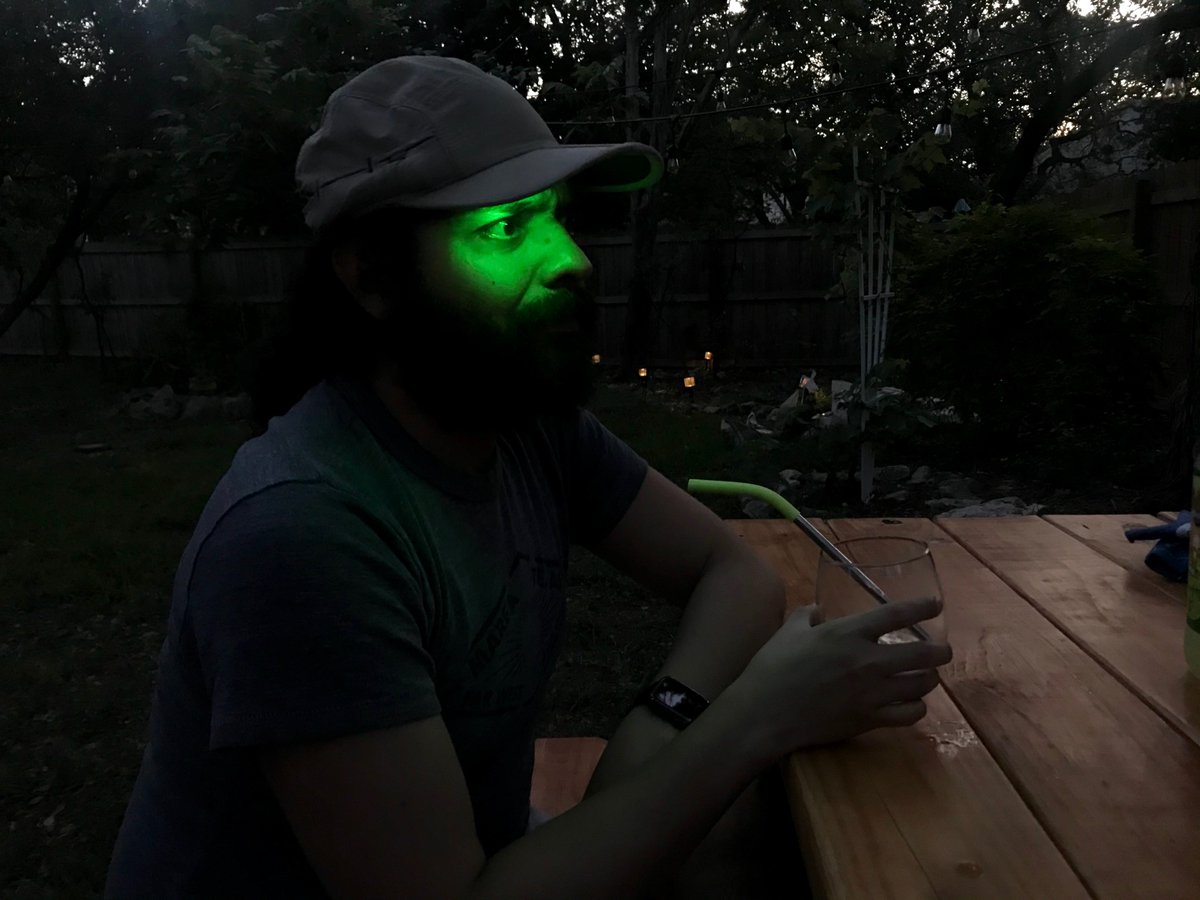
(original)
Replying to @josecastillo
…for navigating the pin muxing constraints of two different microcontrollers. Most of all, thanks to @adafruit, for continuing to share ideas and really clever engineering; this project would not exist but for their dedication to the open source ethos. 🙏🏽
(original)
Replying to @josecastillo
There’s another board in there, but I need to play with it more before getting all tweety. Last point: I didn’t make this alone; many thanks to @digikey, @oshpark and @oshstencils, to @tomfleet for sharing ideas, and @siddacious for his awesome SAMD notes which were essential…
(original)
Replying to @josecastillo
It’s all open source and published online, so you can make one yourself if you want! The file is “OSO-SCAP-A1-02 (WIP)” in the PCB folder, and it’s $9 to get three of them from @oshpark. The stencil is another $5 from @oshstencils. Here’s the repository: https://github.com/joeycastillo/Sensor-Cap
(original)
Replying to @josecastillo
ANYWAY. The final result! Main board fits at the back of the cap, sensor package connects over the 9-pin, and a Neopixel strip runs off the STEMMA port for temperature alerting. (I usually have tape around the sensor board to protect from sweat; it’s taken off for illustration)
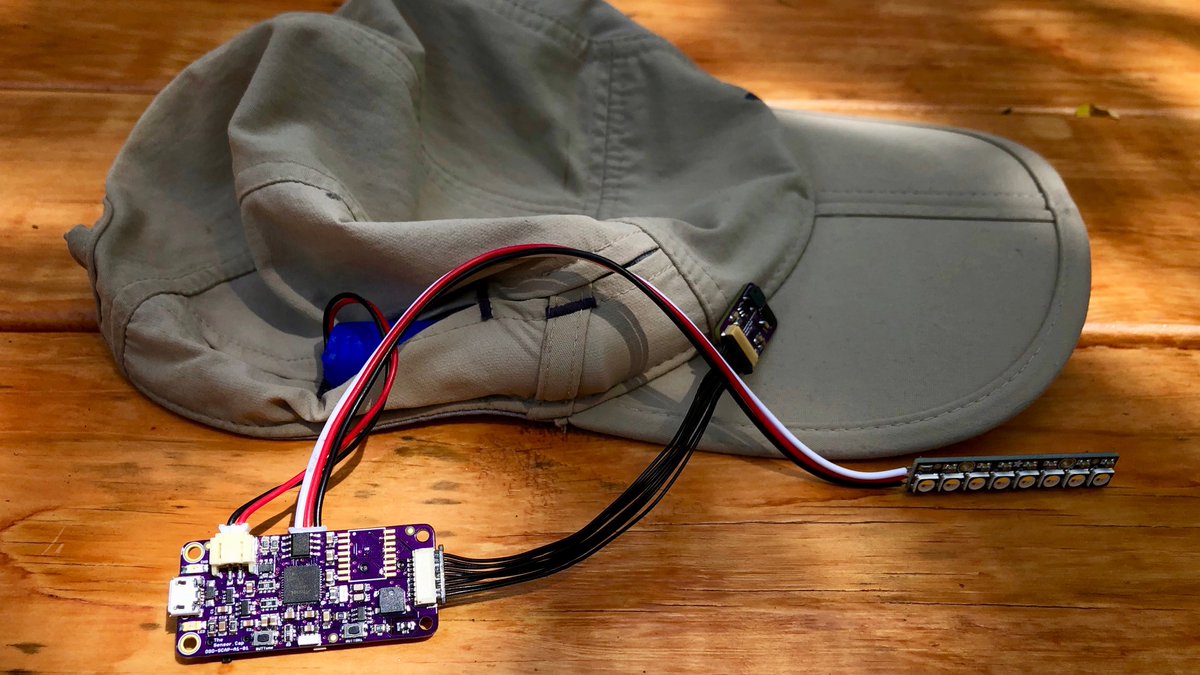
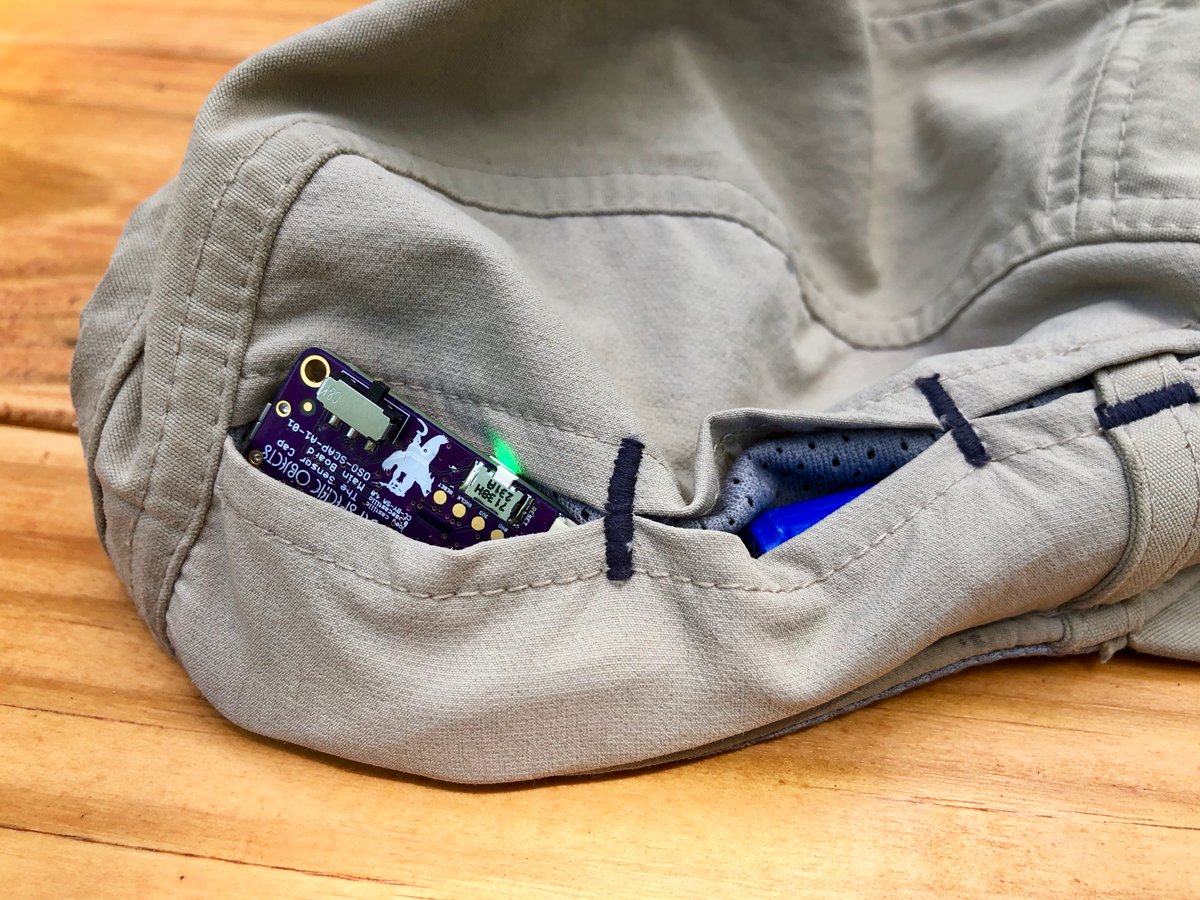
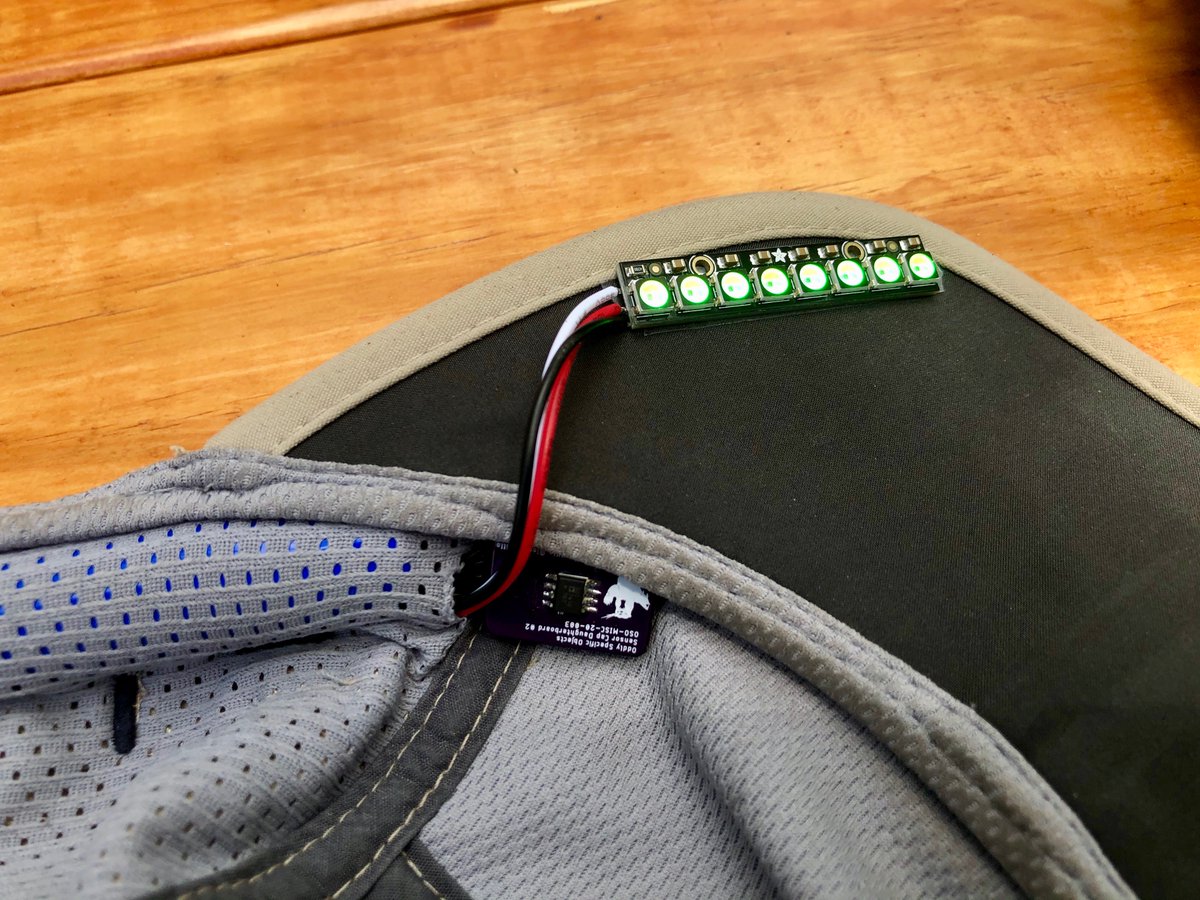
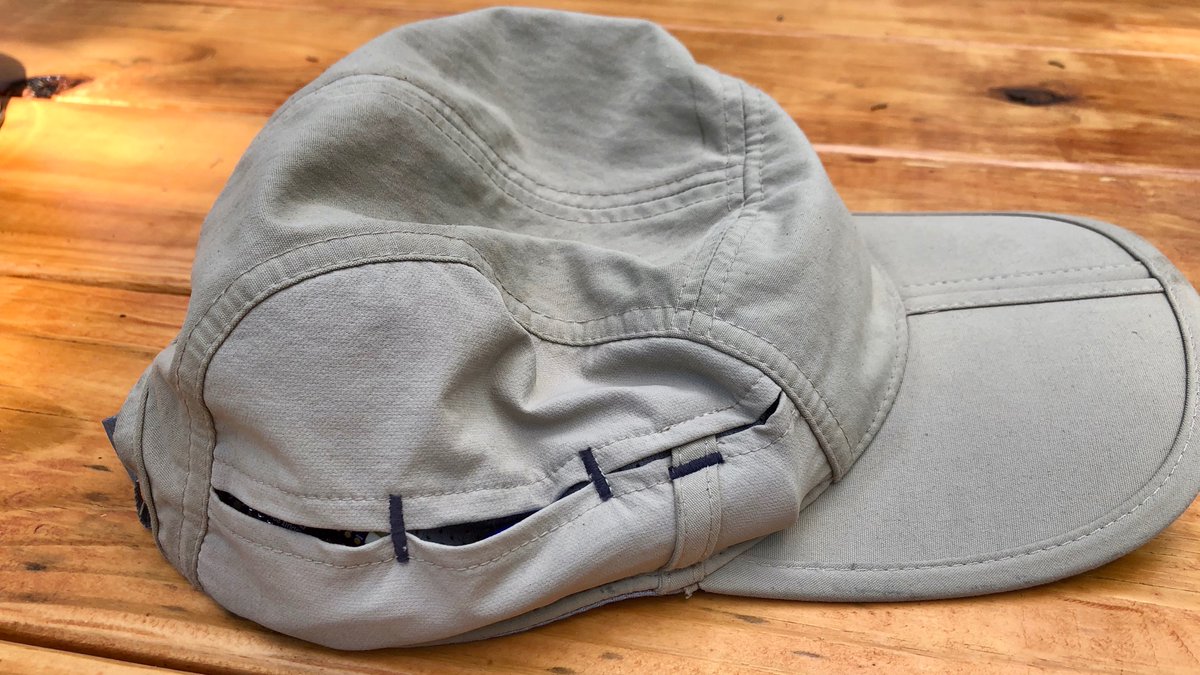
(original)
Replying to @josecastillo
Oh, and did I mention it runs @CircuitPython? It’s wild to me how simple it is to get a new board up and running with it; then once you do, it’s so easy to work with. Last night I had it beeping and blinking and thermistor’ing within minutes of flashing the firmware :)
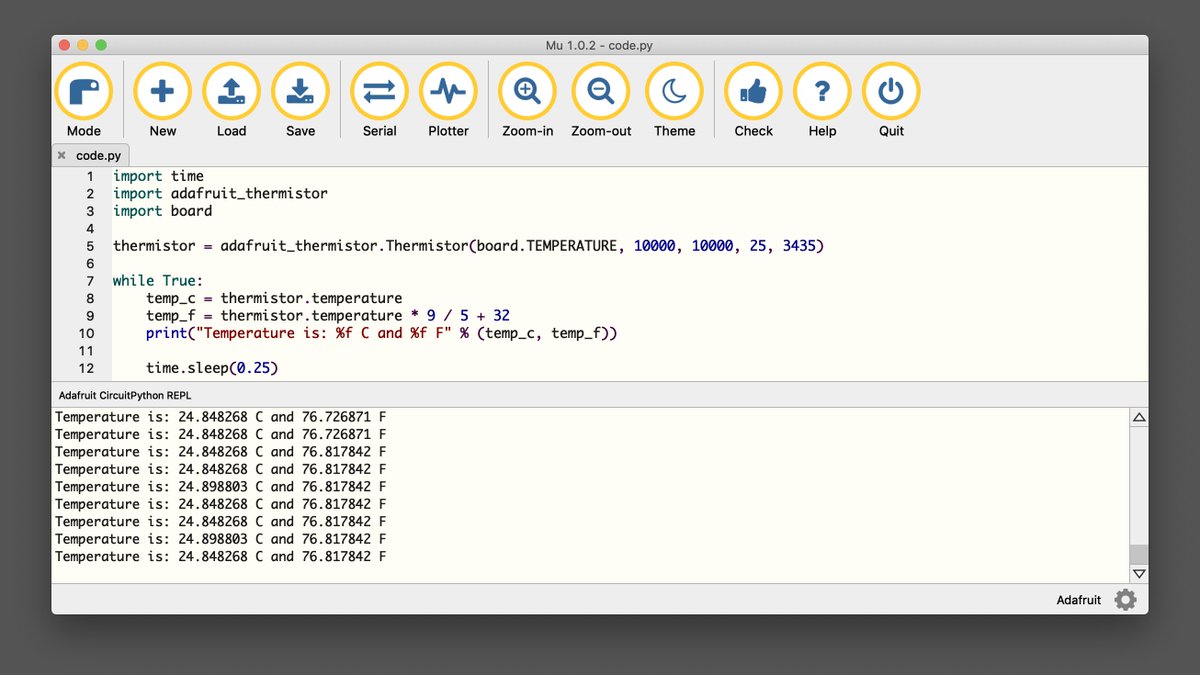
(original)
Replying to @josecastillo
On the back of the main board: a battery backup for the DS3231 RTC (which I forgot in my last @digikey order, oops), STEMMA port for Neopixeling, STEMMA-QT for adding more I2C gadgets (maybe an OLED?) and some socket header in the shape of an ESP-01 for wifi (as yet untested).
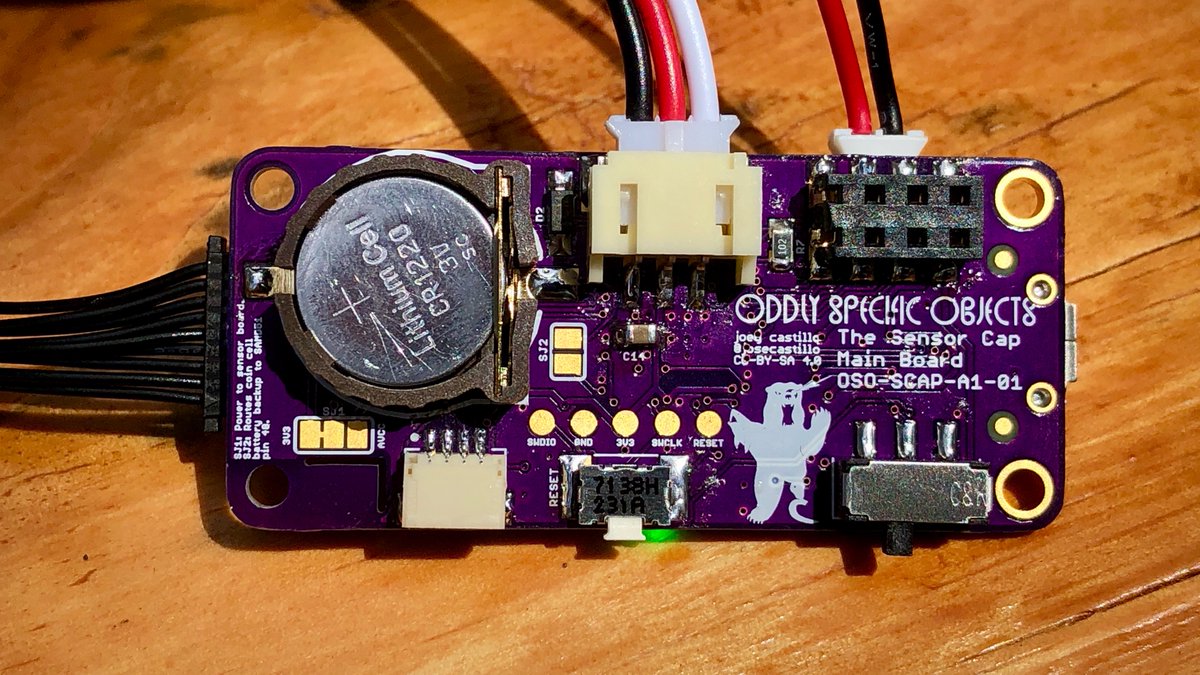
(original)
Replying to @josecastillo
So that’s the sensor boards. The main board is rad though. After an initial attempt with a SAMD21, I realized, why not just go all in? The SAMD51 in this baseball cap is powerful enough to run TensorFlow Lite models on the sensor data it collects. That feels pretty interesting!
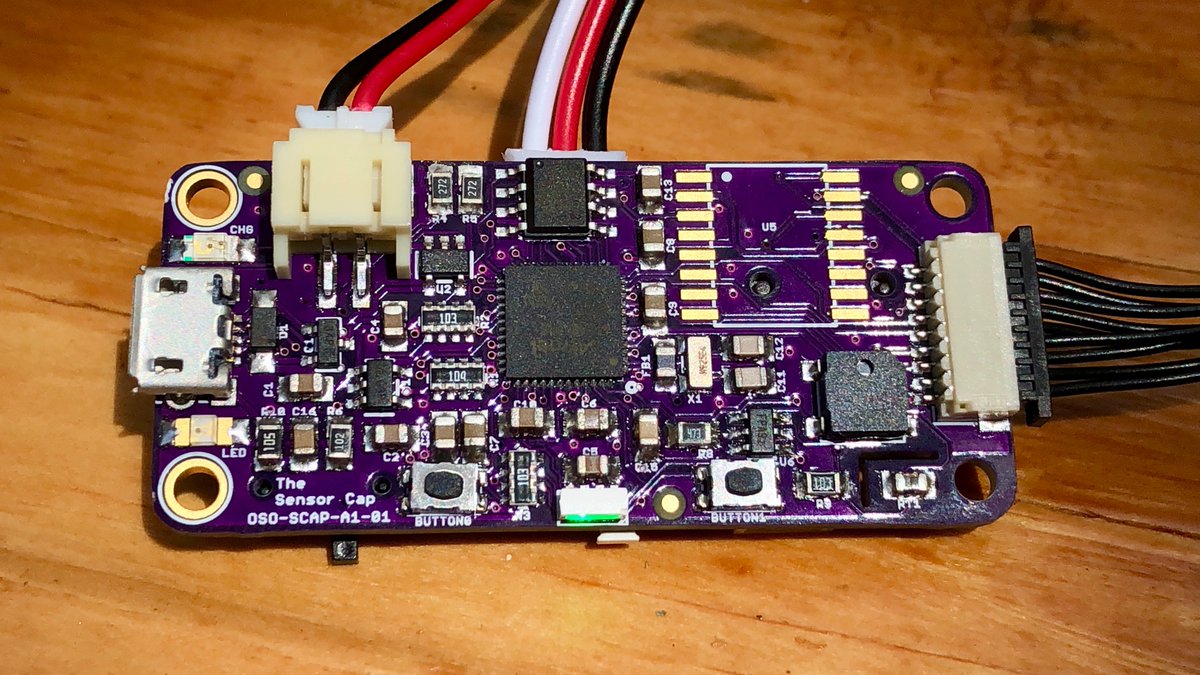
(original)
Replying to @josecastillo
…then I realized: why not just use the 9-pin connector? Adafruit already sells the cable, and while 7 pins isn’t a full Feather’s worth of IO, it might be enough to design some useful boards. These were the first: a thermistor + proximity sensor, and an ADT7410 with some extras.
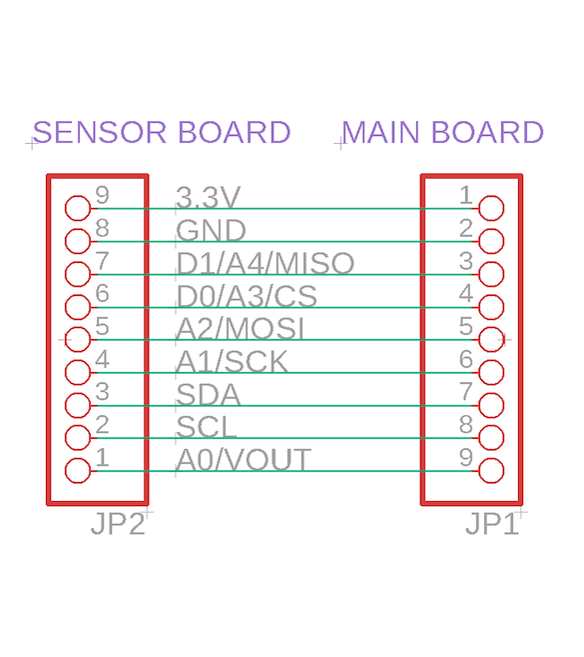
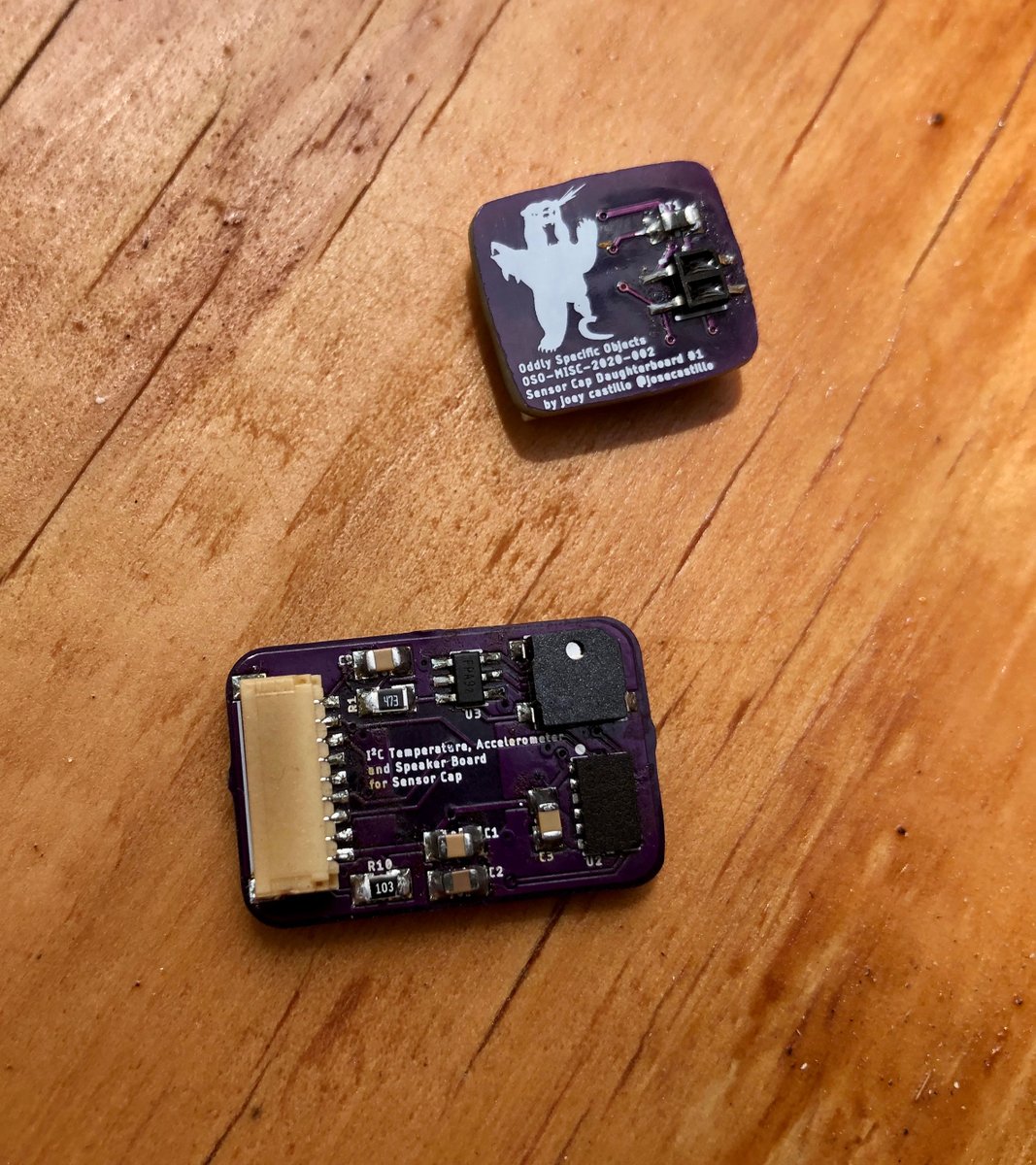
(original)
Replying to @josecastillo
The obvious thought was a small sensor board connected in some way to a main board. I toyed with pin headers, but when I saw the @adafruit MONSTER M4SK JST-SH connector, I thought hey, that’s pretty slim! Initially searched for a 10 or 12 pin JST so as to have many GPIO options…
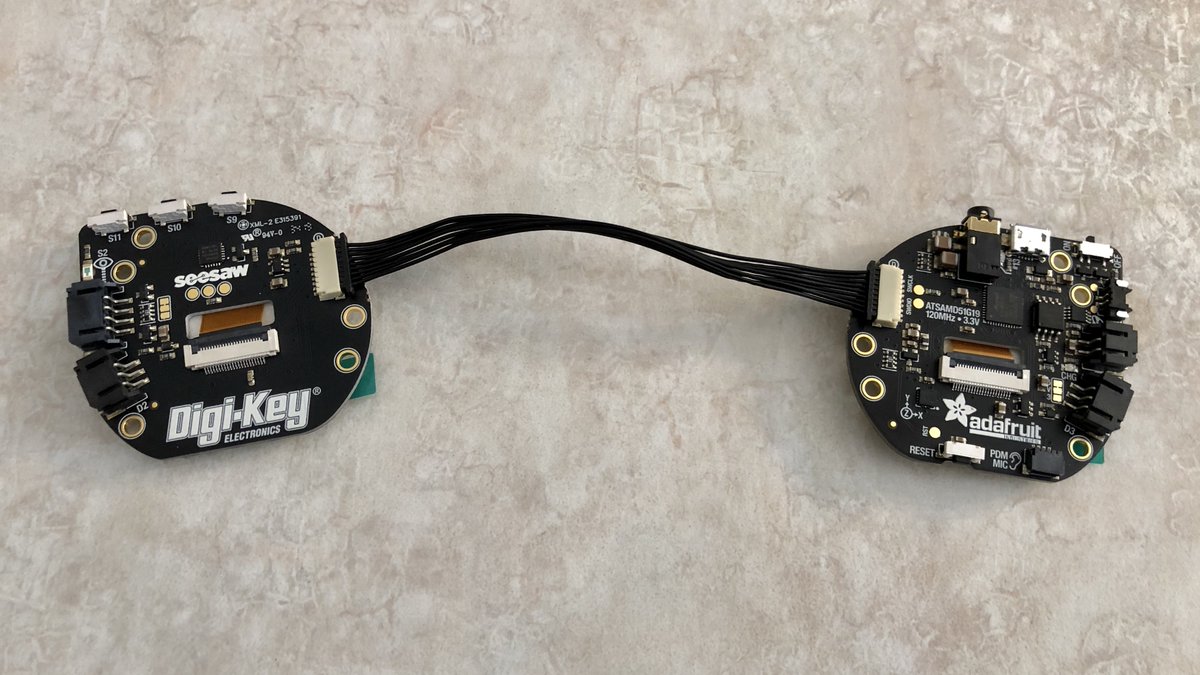
(original)
Replying to @josecastillo
Initially the thermometer hat was a Feather M4, an OLED wing and an ADT7410 breakout board. Which was rad, but even with slim headers, could do with more slimming down. STEMMA-QT ports could help with this, but I also wanted to have options for more sensors and interrupt pins.
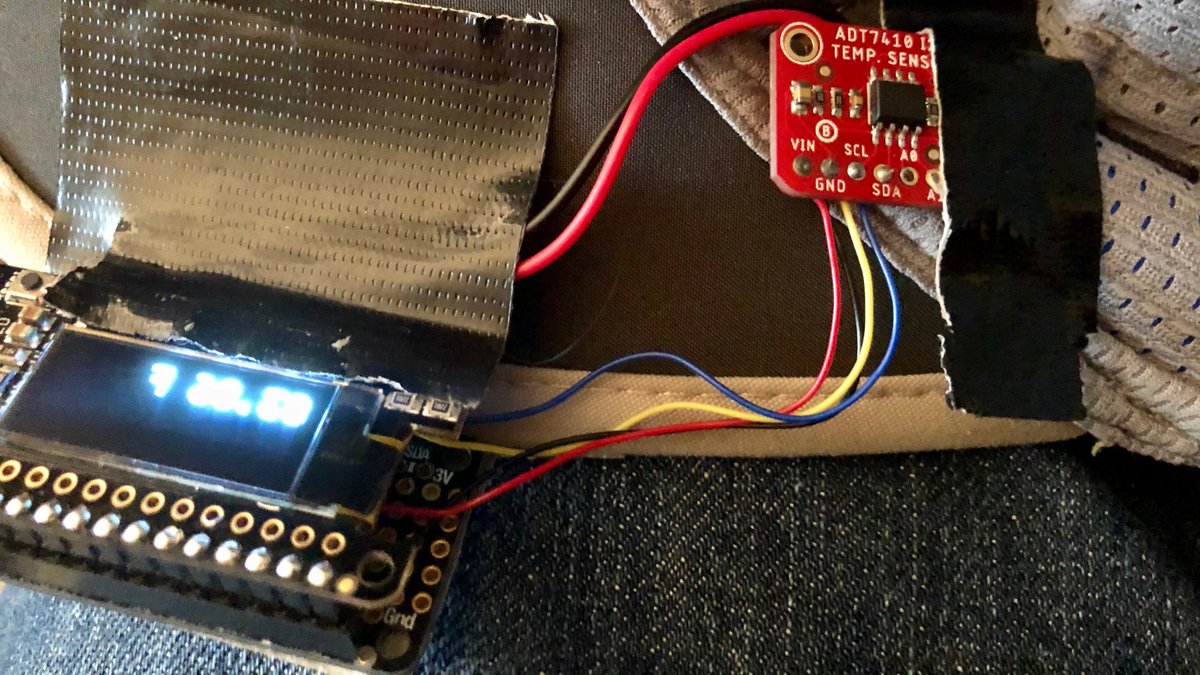
(original)
OKAY Y’ALL! Let’s talk about Thermometer Hat. Last month I set out with the goal of mounting a temperature sensor on my forehead. Yesterday I finished exactly the board I wanted for this purpose, plus a spec for additional sensor types, and some more stuff. A thread!
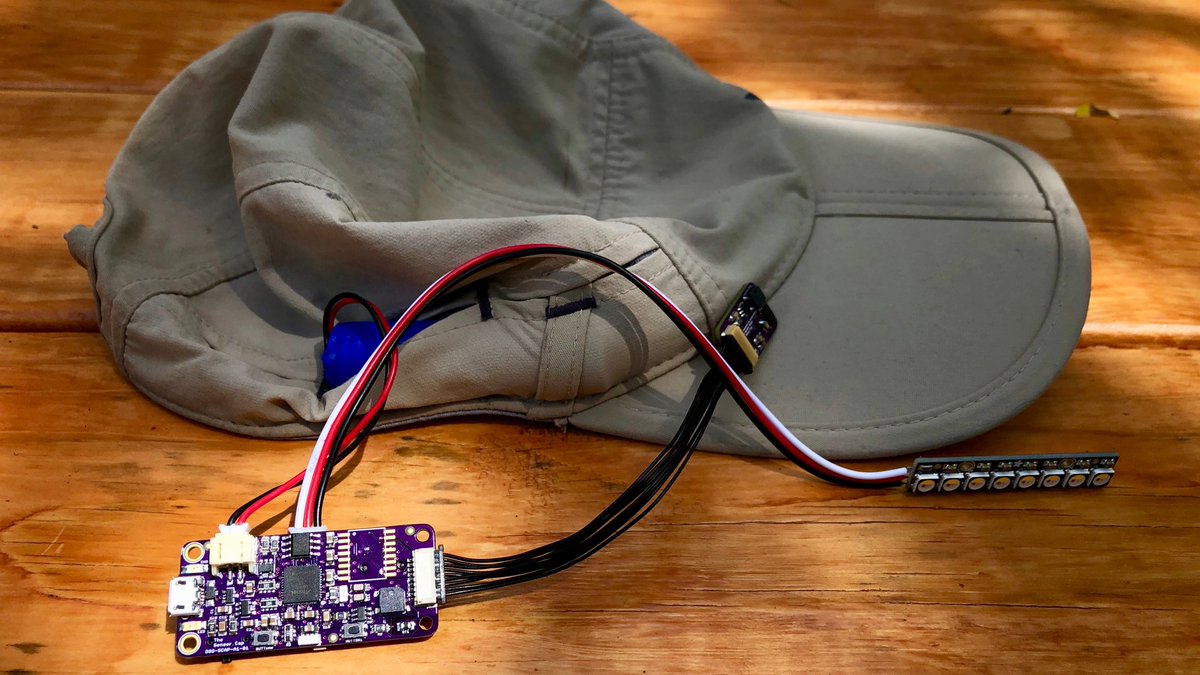
(original)
Replying to @derekcaelin
I am not, unfortunately; I like the idea of it but have never taken the plunge.
(original)
Replying to @josecastillo
Anyway! Design files are in the Temperature Hat repo, but I’m gonna design a better one (flexy!) with lessons learned. Also need a better name for this project, since I’m now using it to create off-head sensors as well :) https://github.com/joeycastillo/Feather-Projects/tree/master/Temperature%20Hat/Daughterboards
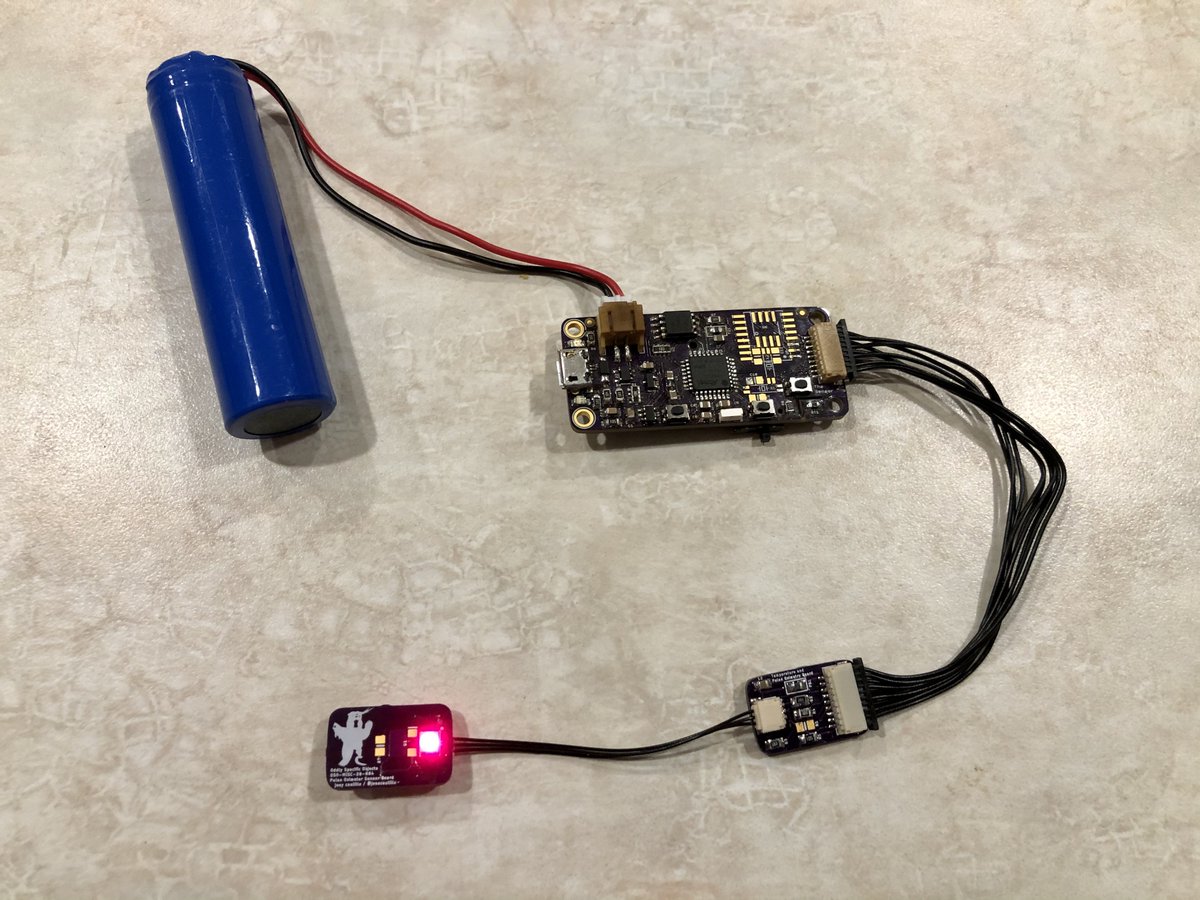
(original)
Replying to @josecastillo
Does it work? The answer is… I think so? With my IRL pulse oximeter I can hold my breath for a bit and see the SpO₂ start to dip; then when I breathe deeply, it rises again. I think I’m seeing the same thing with this gadget; the ratio changes consistently with my breathing.
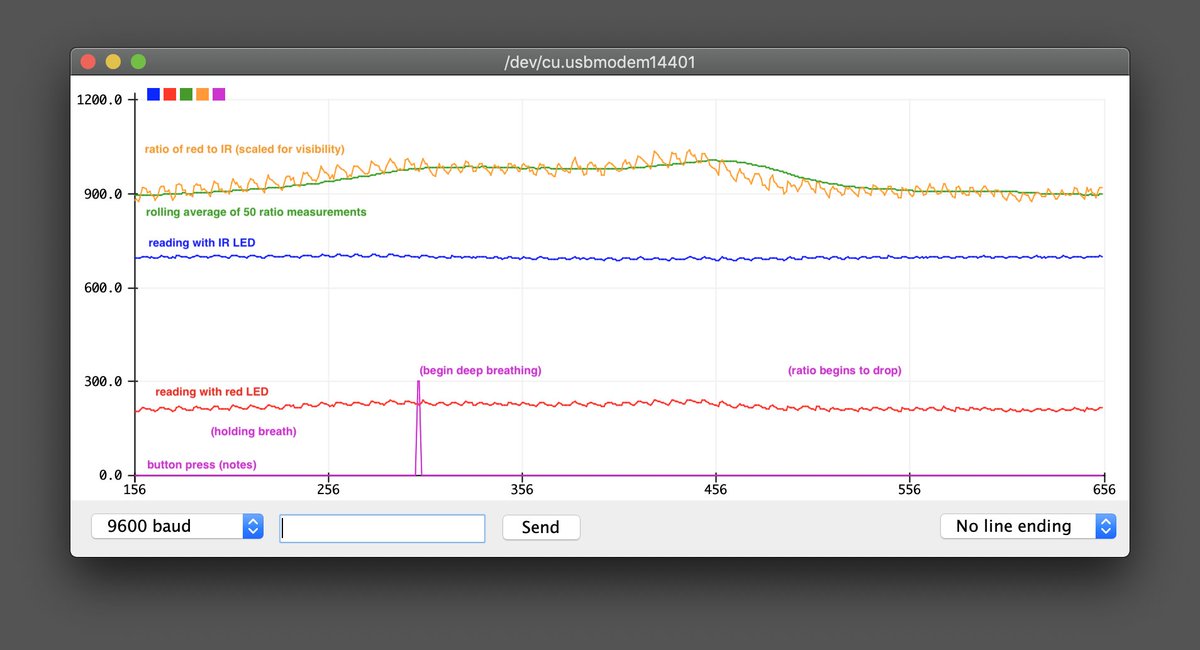
(original)
Replying to @josecastillo
The physical assembly is a piece of 1/16" acrylic that I had in the garage, bent into shape while holding it over a Zippo. Gorilla tape keeps boards in place. It leaks light on the sides, so I just cover it with my hat when taking readings; might wrap it in more tape eventually.
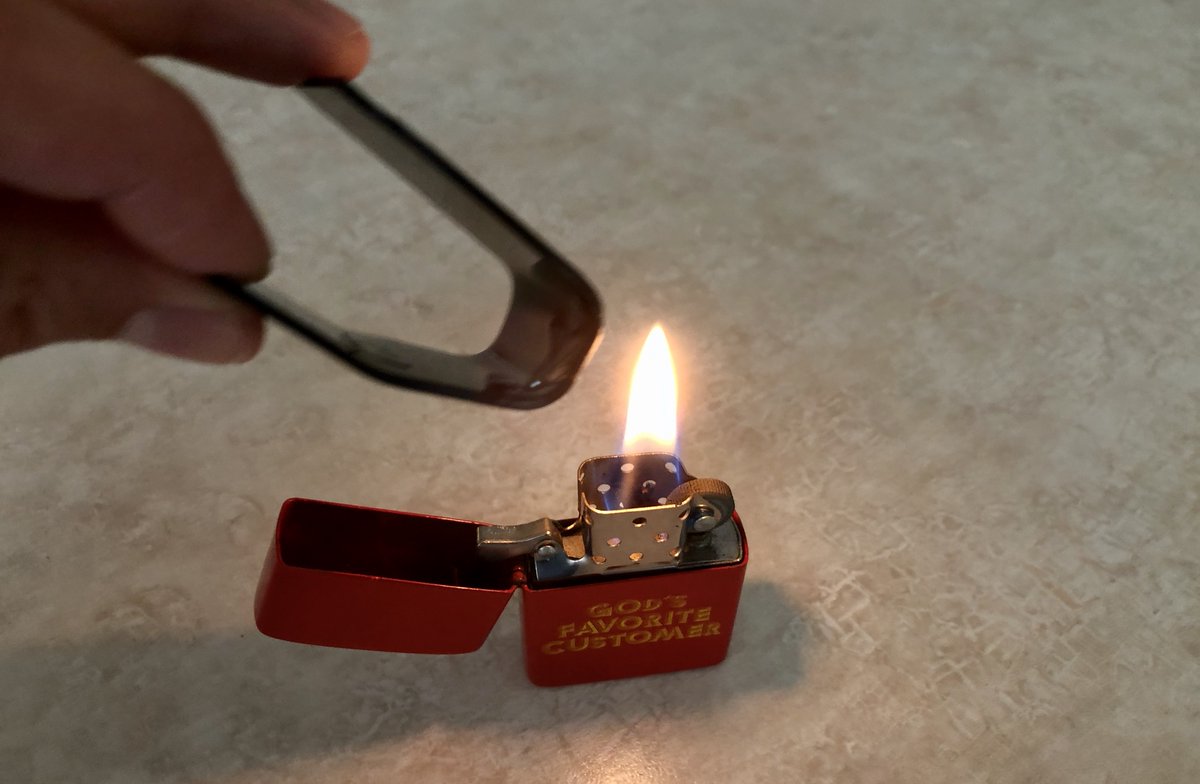
(original)
Replying to @josecastillo
Anyway! This sensor board has a bi-color red/IR LED and an phototransistor. I’d hoped I could shine light into the same side of the finger as I was sensing, but I also included a spot for a cable to put the LED on a separate board, in case that didn’t work. (spoiler: it did not)
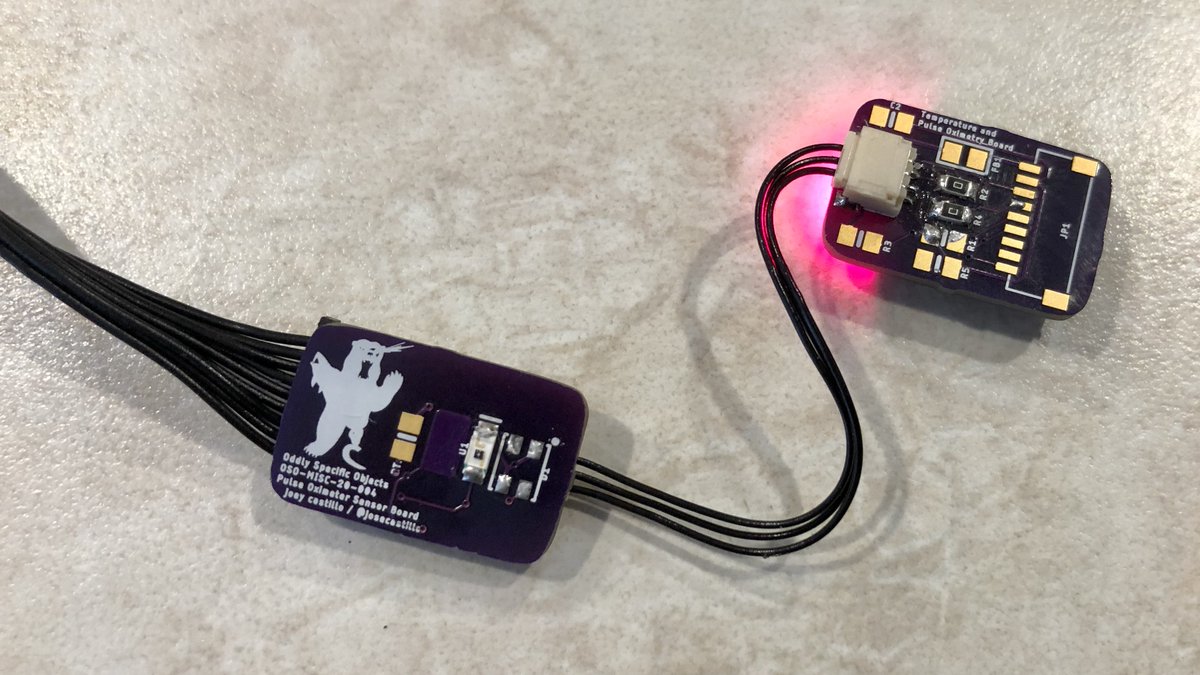
(original)
Replying to @josecastillo
(as a side note, thermo-hat is kind of evolving into a more general board for sensor-y stuff, so lately I’ve been tossing things I want to try onto tiny PCB’s that I can order from @OSHPark at like $2 for 3. They arrive in a week, and look more stylish than wearing a breadboard!)
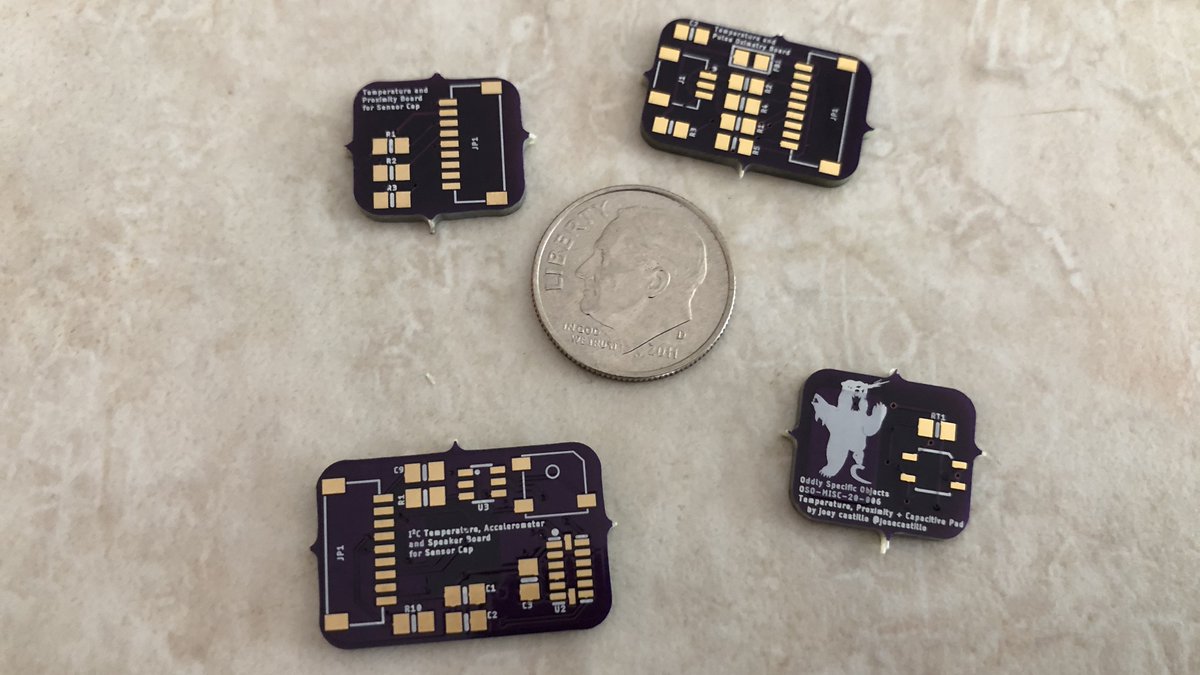
(original)
Replying to @josecastillo
Here’s the theory: you shine pulses of red and IR light into a finger, and measure how much of each is making it through. The ratio tells you how oxygenated the blood is. I’d need calibration to turn that into a real percentage, but for now my goal is just to see the ratio change
(original)
So a few weeks ago on an @Adafruit livestream (https://www.youtube.com/watch?v=ut7oGkIwRrE), Ladyada was tearing down a pulse oximeter and talking about how it works. The way she described it made it sound simple enough that I thought hey, how hard could it be? A thread on trying to DIY one.
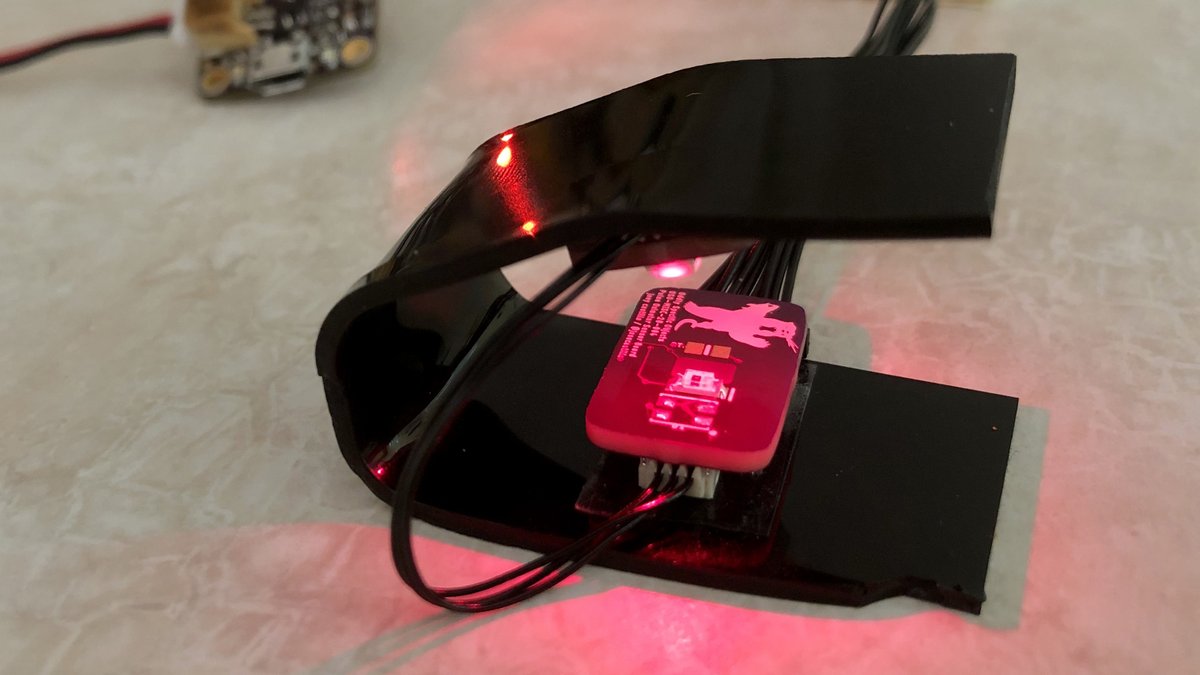
(original)
RT @Zachary: “If the SBA can’t fix the access immediately, then they should take the whole system down to ensure equitable access for all,"…
(original)